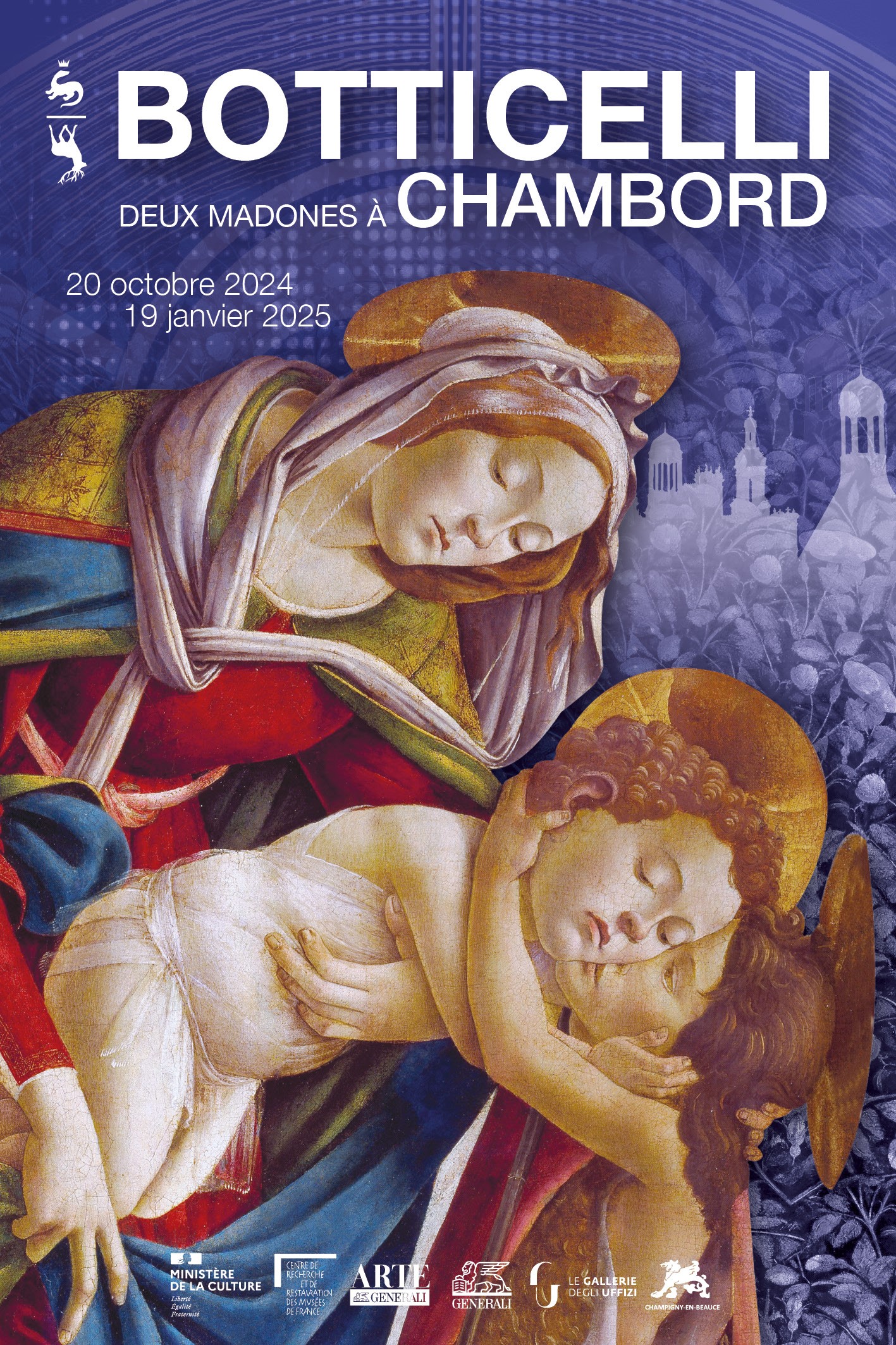In the heart of the Loire Valley, surrounded by a vast expanse of forests, the Château de Chambord rises from the Renaissance. This grand château, originally commissioned by King Francis I displays intricate spires and towers mirroring the nearby waters and the sky above.
In the castle’s chapel, Saint Félix , hangs the long-lost Virgin Mary, Infant Christ, and the Young St. John the Baptist from Botticelli’s studio. The soft light from the tall windows casts delicate shadows on the canvas, revealing the tender expressions of the figures.
Matteo Gianeselli, a curator at the National Renaissance Museum, played a key role in the discovery and authentication of the painting found in Saint Félix Church in Champigny-en-Beauce, initially thought to be a 19th-century replica. He first spotted the painting in 2010 and raised questions about its authenticity, which led to further analysis.
In 2023, advanced techniques confirmed that the artwork, titled Virgin Mary, Infant Christ, and the Young St. John the Baptist, was created by Botticelli's studio around 1510. To verify the authenticity of the Virgin Mary, Infant Christ, and the Young St. John the Baptist painting, experts employed advanced scientific techniques.
The painting was tested by scientists at the National Center for Research and Restoration in French Museums. One key method was X-ray analysis, which allowed researchers to peer beneath the painting’s surface layers to study its composition and brushwork.
They also used binocular microscopy and micro-sampling, which involved extracting tiny samples of paint to analyse the pigments and materials. These samples revealed the use of egg tempera and oil, traditional Renaissance mediums, and confirmed the presence of materials like zinc and glass, aligning with the period's known practices.
Gianeselli's efforts brought significant attention to this rediscovered masterpiece, which will be exhibited at the Château de Chambord alongside a Botticelli original from the Uffizi Gallery. The exhibition runs until January 19th 2025.
Pierre Dubreuil, the director of the Domaine national de Chambord, expressed his excitement about the rediscovered Botticelli painting being exhibited at the Château de Chambord. He emphasised that hosting both the original Botticelli painting and its studio version is an honour, as it highlights the Loire Valley’s historical role as a centre for Renaissance art.
Dubreuil pointed out that these works remind us of the influence of Italian artists in shaping the region's cultural heritage.
Photo credit: Château de Chambord 2024.








